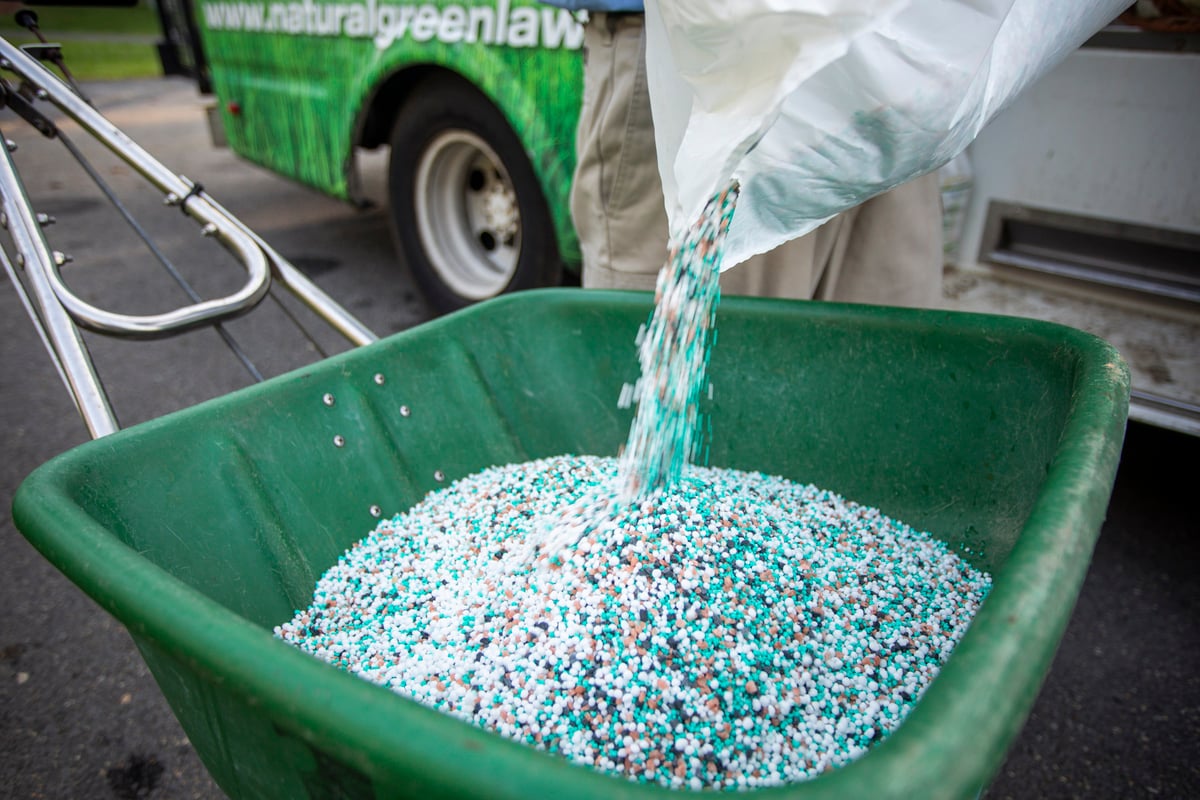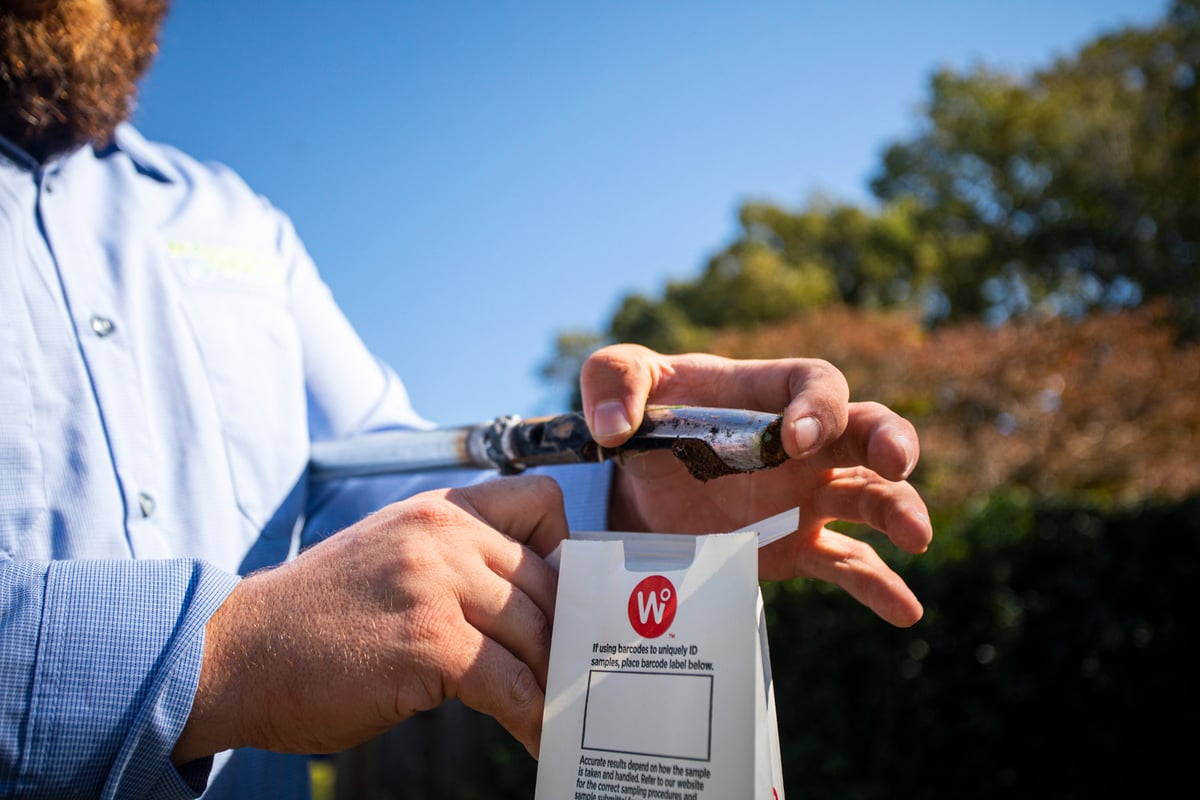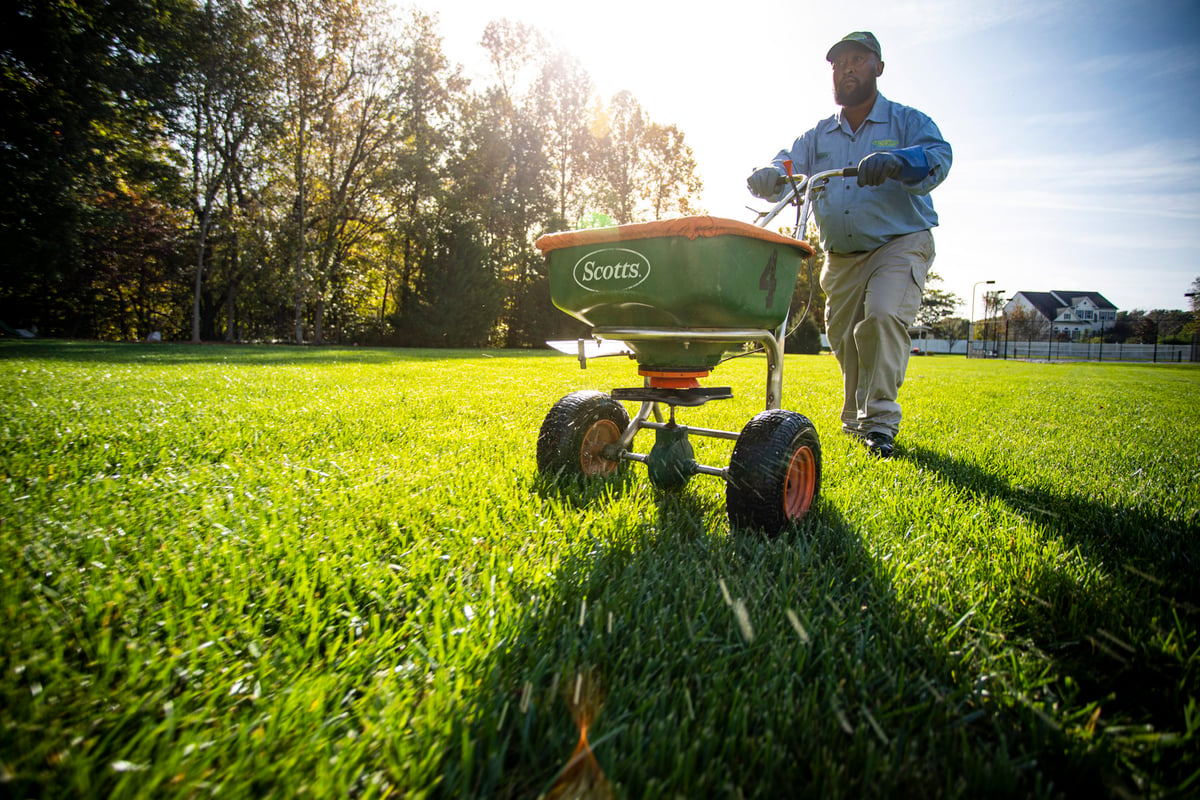7 Common Questions About Lawn Fertilization in Maryland
Having questions is a normal part of life.
Asking questions shows you care about the matter at hand. And when it comes to your lawn, inquiring about your options and how to keep your grass healthy can give you tremendous insight.
Particularly when it comes to lawn fertilization in Maryland, your questions can add up.
Well, it’s time to set the record straight. Let’s dive into lawn fertilization facts so you can feel better informed on how it can help your lawn.
7 Frequently Asked Questions About Lawn Fertilizer
A great-looking lawn doesn’t just happen. Some care is necessary to keep your grass growing strong and healthy, which in turn creates that thick, green look you’re after.
Use This Tool to Compare Your Local Lawn Care Companies
Lawn fertilization is part of that process. Here are the most common questions about lawn fertilization we receive so you can learn how it plays a key role in your lawn’s overall health.
1. What is In Lawn Fertilizer and Why Do I Need to Fertilize My Lawn?
Your lawn, like any living thing, needs nutrients to thrive.
Fertilizers add nutrients to your lawn, including nitrogen (N), phosphorus (P), and potassium (K). Each of these nutrients helps your grass in different ways. Nitrogen helps leaf growth and color, phosphorus aids root growth, and potassium gives lawn strength to better stand up against environmental stress and disease pressure.
 Stronger, more resilient lawn can handle everything you throw at it – heavy foot traffic, high temperatures, sports, your dog running around, large gatherings, you name it.
Stronger, more resilient lawn can handle everything you throw at it – heavy foot traffic, high temperatures, sports, your dog running around, large gatherings, you name it.
A lawn that looks and performs its best will obtain these key nutrients through lawn fertilization in Maryland.
2. Why is a Soil Test Important to Lawn Fertilization?
Conducting a soil test can help guide your lawn fertilization process.

This question about lawn fertilization shows up quite a bit. The reason being that a proper pH is crucial to a lawn being able to absorb fertilizer properly, and a soil test reveals your lawn’s pH. If your pH is too low, your fertilizer applications won’t reach your lawn roots, so it becomes a waste.
Lime applications can raise your soil pH to the right levels. The soil test can tell you how low your soil pH is to ensure your work helps you reach the right levels.
3. What Can I Do Before Fertilizing My Lawn?
Mowing before fertilization is always a good idea. Remember to mow to a 3 to 4 inch height.
If your lawn is slightly wet, fertilization is also OK because the granules may better adhere to your lawn.
4. How Often is Lawn Fertilization Needed?
Lawn fertilization in Maryland certainly has its benefits, but you never want to overdo it.
 Ideally, fertilizing your lawn four times per year in early spring, late spring, summer, and fall – roughly 6 to 8 weeks apart is ideal. Sometimes a fifth application is necessary if the growing season kicks off early.
Ideally, fertilizing your lawn four times per year in early spring, late spring, summer, and fall – roughly 6 to 8 weeks apart is ideal. Sometimes a fifth application is necessary if the growing season kicks off early.
Spring fertilization gives your lawn top growth it needs to appear thick and green, while fall fertilizing provides your lawn’s roots with nutrients to create a strong base.
5. How Long Will It Take to See Lawn Care Results?
Usually, you can see lawn care results in as little as one or two days to about one week after application.
The immediate visual impact of results can depend on the type of fertilizer you use and the condition of your lawn.
6. How Long Should You Stay Off Of Your Grass After Fertilizing?
A good rule of thumb is to stay off of your lawn – children and pets included – roughly 24 hours after lawn fertilization in Maryland.
 If it’s a liquid application, waiting until it is dry is usually enough time before walking on it.
If it’s a liquid application, waiting until it is dry is usually enough time before walking on it.
7. Does Maryland Have Lawn Care Laws About Fertilization?
A Maryland Nutrient Management Law exists that limits fertilizer applications.
Between December 1 and March 1 annually, you are not allowed to apply fertilizer to your lawn.
During the growing season, you also cannot apply more than 3.5 pounds of nitrogen per 1,000 square feet at any time.
Learn More About Professional Lawn Fertilization in Maryland
You want a great looking lawn -- one you can enjoy and your neighbors envy. We get it. Who doesn’t want a thick, green lawn?
We hope these questions and answers about lawn fertilization in Maryland help you better understand what your lawn needs.
If you’re still wondering about how fertilization can make a difference or have more questions, give Natural Green a call. We can help you better understand what your Central or Southern Maryland lawn is missing and provide suggestions on what it needs to look its best.
Looking to improve the look of your lawn in Central or Southern Maryland? We’d love to help. Get started today with a free quote. Together, we’ll prepare a customized plan so you can have the kind of lawn you love.
Having questions is a normal part of life.
Asking questions shows you care about the matter at hand. And when it comes to your lawn, inquiring about your options and how to keep your grass healthy can give you tremendous insight.
Particularly when it comes to lawn fertilization in Maryland, your questions can add up.
Well, it’s time to set the record straight. Let’s dive into lawn fertilization facts so you can feel better informed on how it can help your lawn.
7 Frequently Asked Questions About Lawn Fertilizer
A great-looking lawn doesn’t just happen. Some care is necessary to keep your grass growing strong and healthy, which in turn creates that thick, green look you’re after.
Use This Tool to Compare Your Local Lawn Care Companies
Lawn fertilization is part of that process. Here are the most common questions about lawn fertilization we receive so you can learn how it plays a key role in your lawn’s overall health.
1. What is In Lawn Fertilizer and Why Do I Need to Fertilize My Lawn?
Your lawn, like any living thing, needs nutrients to thrive.
Fertilizers add nutrients to your lawn, including nitrogen (N), phosphorus (P), and potassium (K). Each of these nutrients helps your grass in different ways. Nitrogen helps leaf growth and color, phosphorus aids root growth, and potassium gives lawn strength to better stand up against environmental stress and disease pressure.
 Stronger, more resilient lawn can handle everything you throw at it – heavy foot traffic, high temperatures, sports, your dog running around, large gatherings, you name it.
Stronger, more resilient lawn can handle everything you throw at it – heavy foot traffic, high temperatures, sports, your dog running around, large gatherings, you name it.
A lawn that looks and performs its best will obtain these key nutrients through lawn fertilization in Maryland.
2. Why is a Soil Test Important to Lawn Fertilization?
Conducting a soil test can help guide your lawn fertilization process.

This question about lawn fertilization shows up quite a bit. The reason being that a proper pH is crucial to a lawn being able to absorb fertilizer properly, and a soil test reveals your lawn’s pH. If your pH is too low, your fertilizer applications won’t reach your lawn roots, so it becomes a waste.
Lime applications can raise your soil pH to the right levels. The soil test can tell you how low your soil pH is to ensure your work helps you reach the right levels.
3. What Can I Do Before Fertilizing My Lawn?
Mowing before fertilization is always a good idea. Remember to mow to a 3 to 4 inch height.
If your lawn is slightly wet, fertilization is also OK because the granules may better adhere to your lawn.
4. How Often is Lawn Fertilization Needed?
Lawn fertilization in Maryland certainly has its benefits, but you never want to overdo it.
 Ideally, fertilizing your lawn four times per year in early spring, late spring, summer, and fall – roughly 6 to 8 weeks apart is ideal. Sometimes a fifth application is necessary if the growing season kicks off early.
Ideally, fertilizing your lawn four times per year in early spring, late spring, summer, and fall – roughly 6 to 8 weeks apart is ideal. Sometimes a fifth application is necessary if the growing season kicks off early.
Spring fertilization gives your lawn top growth it needs to appear thick and green, while fall fertilizing provides your lawn’s roots with nutrients to create a strong base.
5. How Long Will It Take to See Lawn Care Results?
Usually, you can see lawn care results in as little as one or two days to about one week after application.
The immediate visual impact of results can depend on the type of fertilizer you use and the condition of your lawn.
6. How Long Should You Stay Off Of Your Grass After Fertilizing?
A good rule of thumb is to stay off of your lawn – children and pets included – roughly 24 hours after lawn fertilization in Maryland.
 If it’s a liquid application, waiting until it is dry is usually enough time before walking on it.
If it’s a liquid application, waiting until it is dry is usually enough time before walking on it.
7. Does Maryland Have Lawn Care Laws About Fertilization?
A Maryland Nutrient Management Law exists that limits fertilizer applications.
Between December 1 and March 1 annually, you are not allowed to apply fertilizer to your lawn.
During the growing season, you also cannot apply more than 3.5 pounds of nitrogen per 1,000 square feet at any time.
Learn More About Professional Lawn Fertilization in Maryland
You want a great looking lawn -- one you can enjoy and your neighbors envy. We get it. Who doesn’t want a thick, green lawn?
We hope these questions and answers about lawn fertilization in Maryland help you better understand what your lawn needs.
If you’re still wondering about how fertilization can make a difference or have more questions, give Natural Green a call. We can help you better understand what your Central or Southern Maryland lawn is missing and provide suggestions on what it needs to look its best.
Looking to improve the look of your lawn in Central or Southern Maryland? We’d love to help. Get started today with a free quote. Together, we’ll prepare a customized plan so you can have the kind of lawn you love.


